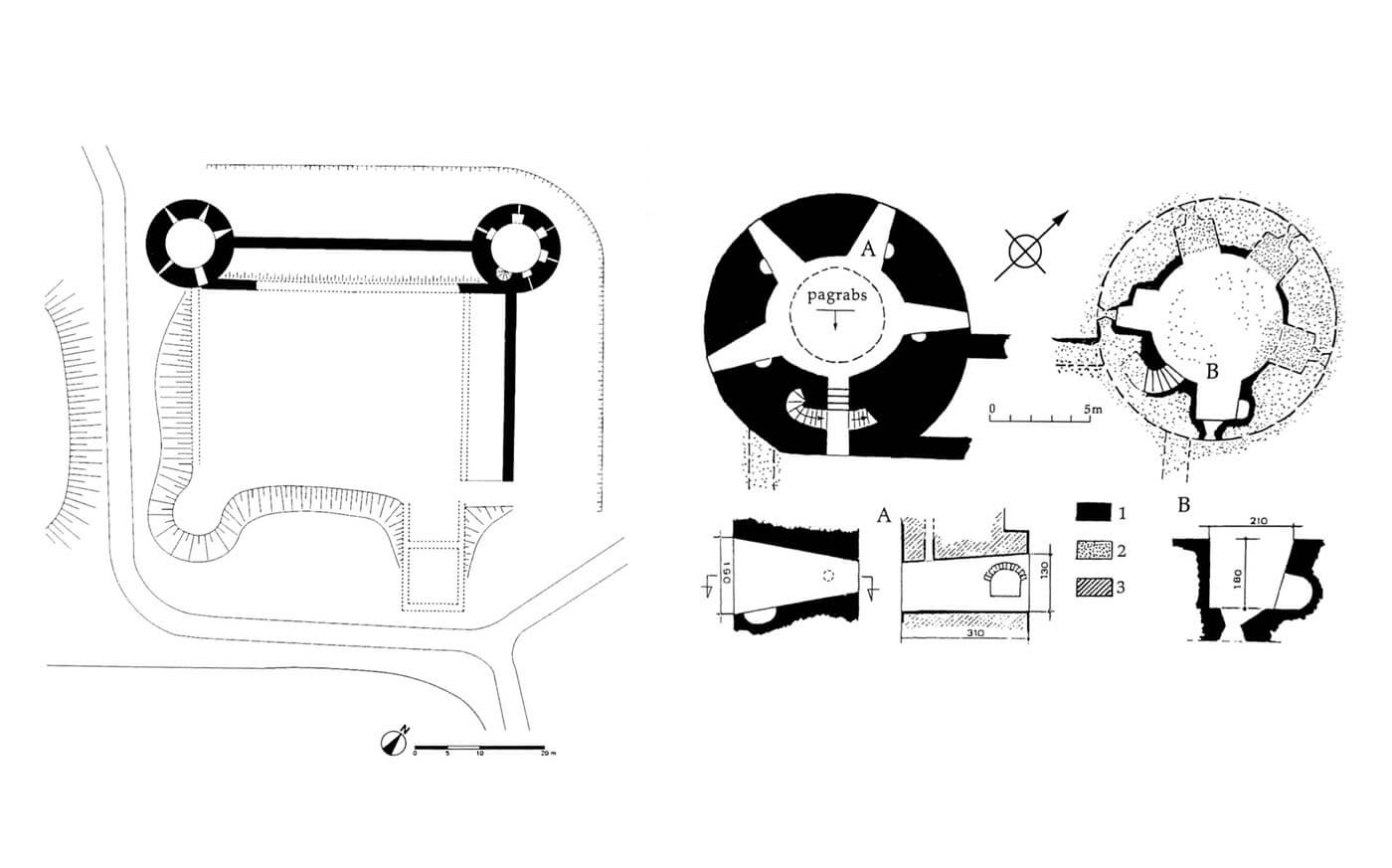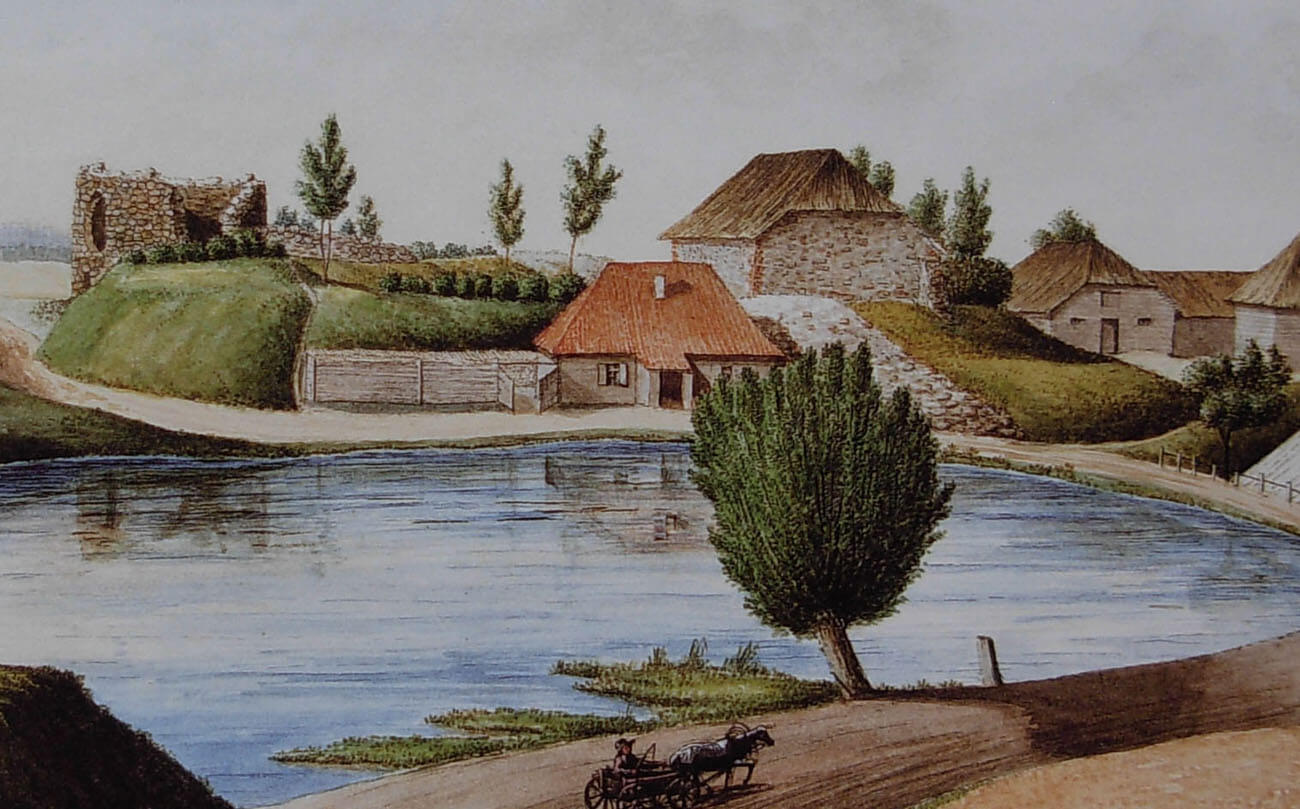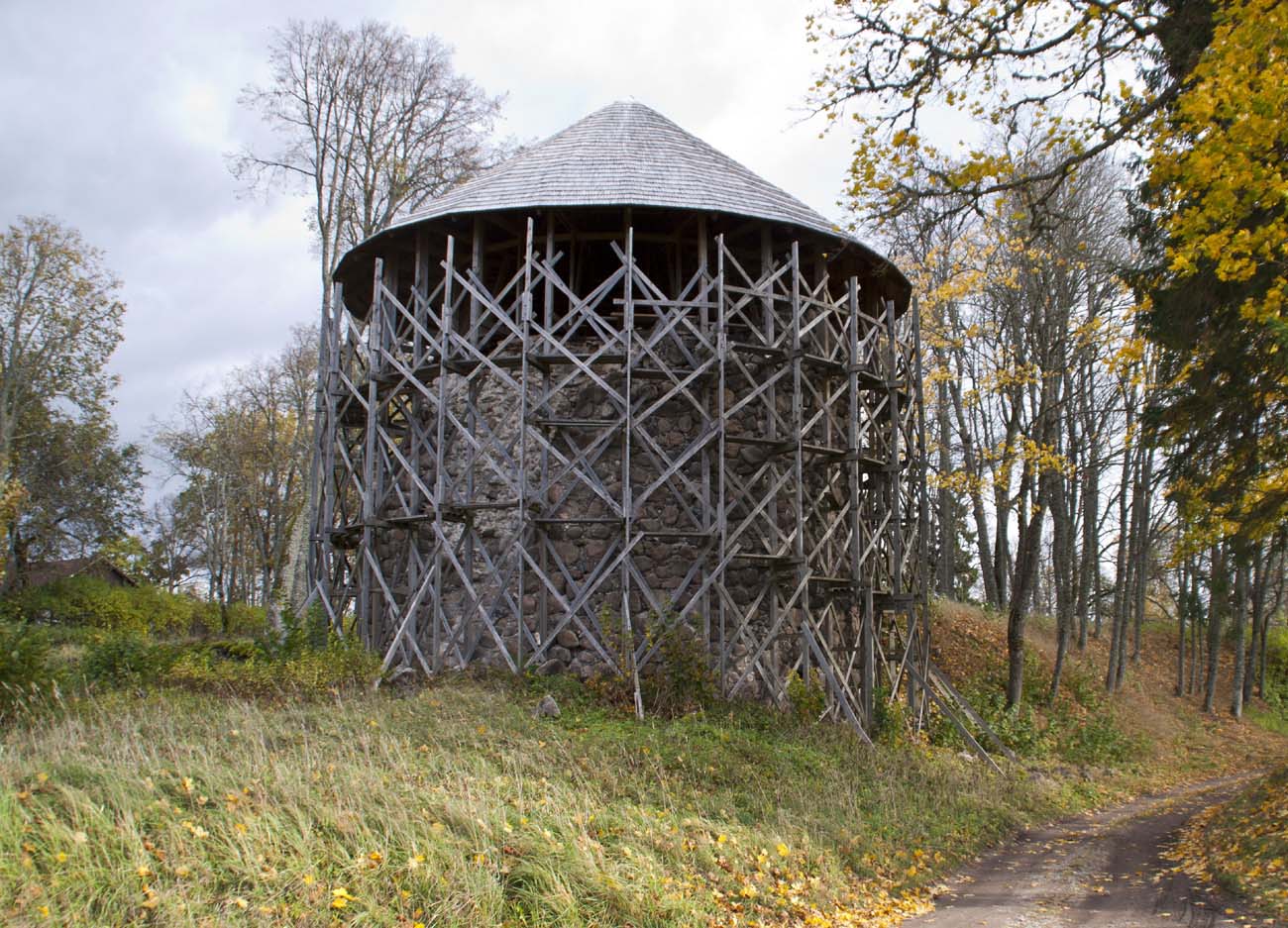History
Mujāni Castle (German: Mojahn) was built by the vassals of the Archbishop of Riga, the von Rozen family, in the late 15th or early 16th century, although local estates were recorded in documents as early as the late 14th century. During the Polish-Swedish wars of the 17th century, castle often passed from hand to hand. It was finally destroyed during the Great Northern War in the early 18th century.
Architecture
The castle was protected from the south by a relatively high slope, at the foot of which there was a lake slightly to the west. The castle walls formed a quadrangle measuring approximately 49 x 36 meters. In the northern, most vulnerable to attack side were two round towers, situated in the corners. Their diameter was 13 meters, and the wall thickness was 3 meters, while the height was greater than 9 meters. Another cylindrical tower could have been located in the south-west corner, while the main gate was located in a quadrangular gatehouse in the south-east part. There were several stone houses within the perimeter wall, but most of the buildings were made of wood or in half-timbered.
Current state
To this day, only the north-western tower, known as the White Tower, has survived. There are also relics of the wall nearby. The tower is covered with a wooden protection structure.
bibliografia:
Herrmann C., Burgen in Livland, Petersberg 2023.
Tuulse A., Die Burgen in Estland und Lettland, Dorpat 1942.



